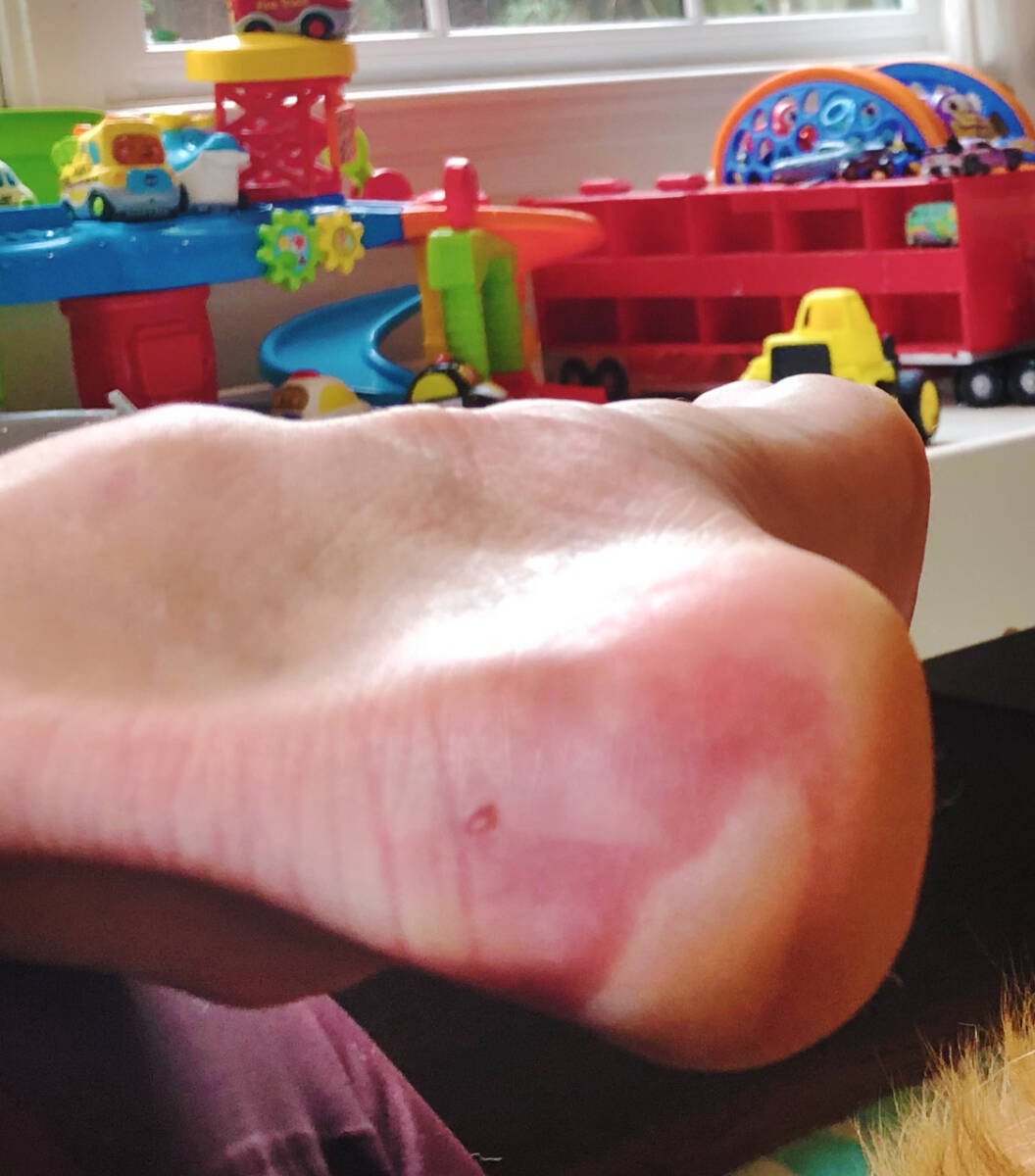What is RPE in Running (& How to Use It)
Running by RPE (rate of perceived exertion) allows you to tune into how your body is feeling so you can run to your optimal potential. Running by RPE involves paying attention to your heart rate, sweat rate, breath rate, and muscle fatigue. It is more reliable than running by pace or heart rate because it factors into account variables that change how you feel–and it has become my go-to metric for running!

Being a smart runner means walking the fine line between listening to your body and knowing when to ignore it to push your limits. The way to walk this fine line is to learn to run by the RPE scale. RPE in running stands for rate of perceived exertion or relative perceived exertion.
Learning how to run by RPE (or to run by effort) is an art that has gotten overly complicated. Runners are now bombarded by stats from our wearables to our apps to race pace calculators. All this noise can distract away from the true measure of our training: how we feel.
And because there are so many variables in running and life—which are inextricably linked—how we feel on a run can be very different. We can run the same course at the same pace in the same weather wearing the same clothes after eating the same breakfast and feel GREAT or TERRIBLE on any given day.
Life stress, a sick kid, sleep quality, your menstrual cycle, or a thousand other things, can impact our run. Our Garmin or GPS watch doesn’t factor this in, but our body does. This is one reason why I’ve stop looking at my Garmin data and focused on how my body feels because only it truly knows. I have used this to scale back if I feel an injury or illness coming on–even if my Garmin says I am being productive.
What is RPE in running?
RPE in running or, running by the Rate of Perceived Exertion scale, is running by the measure of intensity (how hard the run feels).
Rate of perceived exertion is based on physical reactions to your exercise including:
- Heart rate
- Sweating
- Breathing rate, and
- Muscle fatigue
The most common RPE scale for running rates intensity levels from 1 to 10: 1 being extremely light intensity and 10 being all-out running.
There are other RPE scales with different ranges like the Borg scale but for my athletes and for this article, I’m going to use the most simplistic RPE scale of 1-10.
RPE Scale for Running
- RPE 1 walking
- RPE 2 recovery jog or shakeout run
- RPE 3-4 easy base-building run, warm-up, cool-down
- RPE 5 Marathon pace
- RPE 6 Half-marathon pace
- RPE 7 Tempo run (pace you can hold for an hour, e.g. 10k to 15k)
- RPE 8 Threshold run or cruise intervals (pace you can hold for 30-45 minutes e.g. 8k to 10k)
- RPE 9 Short and fast intervals (1-mile to 5k effort), VO2 Max
- RPE 10 The end of your workout, finishing kick, anaerobic
In other words, RPE in running is:
- Levels 1-4 are easy
- Levels 5-6 are moderate
- Levels 7-8 are hard but controlled
- Levels 9-10 are giving it all you have!
FAQs about Running by RPE
Running by effort vs. RPE
Effort and exertion aren’t the same though they are cousins. Effort is a factor in exertion. You may be doing an easy run that feels hard because you’re tired but your heart and breath rate are low. Therefore, it would still rank lower on the RPE scale. You may be running around the track doing fast intervals, feeling like you’re flying. Your effort may seem low but your heart and breathing rates are racing. This is high on the RPE scale for running.
Running by heart rate (HRT) vs. RPE
Running by RPE factors in your heart rate but also factors in other physical factors including your breath rate, perspiration, and how you feel overall. Conversely, training by heart rate zones only considers how fast your heart is pumping which can be influenced by multiple factors such as caffeine intake or poor sleep. Heart rate zones and RPE zones do correlate:
- RPE Levels 1-4/Heart rate zones 1-2 (50-70 percent of your max HR) are recovery, easy, and long runs
- RPE Levels 5-6/Heart rate zones 3 (70-80) percent of your max HR) are moderate efforts including tempo runs
- RPE Levels 7-8/Heart rate zones 4 (80-90 percent of your max HR) are hard but controlled efforts including cruise intervals, threshold, fartleks, and progressions.
- RPE Levels 9-10/Heart rate zones 5 (90-100 percent of your max HR) are VO2 max intervals, sprints or, end of a race or workout
When should I run by effort (using RPE in running)?
Running by effort is key for many situations including running:
- during your period
- with PMS symptoms
- in high humidity or heat
- after poor sleep
- when recovering from an illness, or
- in treacherous weather.
Why should I use RPE for running?
Running by RPE allows you to train more effectively.
Running by RPE (or running by effort) is a subjective way of training that allows you truly be in tune with your body. This helps you execute the purpose of each run.
By training by rate of exertion, you will:
- not be tempted to turn a tempo run into a time trial.
- not run your easy runs too fast, for example. (Remember, easy is not a pace.)
- not push a run when you don’t feel great and end up sick.
- be able to balance your recovery and stress.
- improve race performance.
- know your true zones.
- learn what training methodologies work best for you.
How do I calculate RPE in running?
Use the RPE in running to stay in tune with how you truly feel to run by effort. This requires practice and patience. Start by first differentiating between extremely easy and extremely hard. Then fill in the blanks in the middle. Some tips for learning to run by RPE:
- Run without earbuds. Pay attention to breath rate, heart rate, and sweating.
- Don’t look at your watch. Guess your pace and look at it when done.
- Play with paces. Then play around with pace once you have warmed up. Note that easy is when you can talk. Moderate is when you can speak in short sentences. Hard is when you can only say one word at a time. Note how these different zones feel. Then at the end do 4 by 50 meter hill sprints to know what max effort feels like
Many runners will need to run without earbuds and watches hidden to raise their physical awareness. Do body scans and take note of how:
- your physical body feels (fatigued or energized?),
- fast your heart is pumping,
- many breaths you are taking,
- positive or negative your attitude is,
- much effort you are putting in,
- much you’re sweating.
These factors collect to create your rate of perceived exertion. Knowing these true indicators will help you tune into your true training zones and know when to push and when to hold back.
How to tell Hard vs. Easy Effort Running
A hard effort in running (levels 7 to 10 on the RPE scale) is characterized by heavy breathing, a high heart rate in zones 3-5, high perspiration, and feeling tired. It is also difficult to talk. Chances are, when running at a hard effort, you are thinking about when you get to stop running. Often when running at a hard effort is when you start battling negative thoughts.
When running at an easy effort you feel like you can run forever, you can hold a conversation or sing a song, your breath and breathing rates are low, you aren’t sweating a lot, and you feel energized, not tired.
Do you run by RPE?






